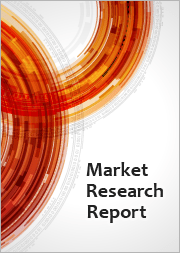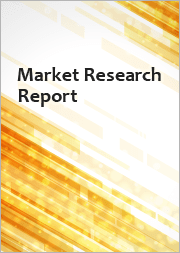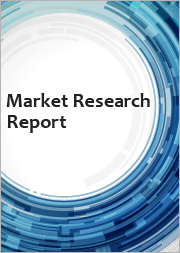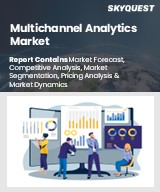
|
시장보고서
상품코드
1452978
세계의 생명과학 분석 소프트웨어 시장(2024-2031년)Global Life Science Analytics Software Market 2024-2031 |
||||||
세계 생명과학 분석 소프트웨어 시장은 예측 기간(2024-2031년) 동안 13.3%의 높은 CAGR로 성장할 것으로 예상됩니다. 임상시험 및 설계 애플리케이션에서 분석 소프트웨어의 채택 확대가 세계 시장 성장의 주요 요인으로 작용하고 있습니다. 분석 소프트웨어는 보다 정량적이고 신뢰할 수 있으며 협력적인 임상시험 설계에 대한 접근 방식을 촉진하여 신약 발견을 가속화하기 위해 시장 참여자들이 사용하고 있습니다. 시장 참여자들은 시장 성장을 더욱 촉진할 수 있는 생명과학 분석 소프트웨어 솔루션을 도입하는 데 주력하고 있습니다. 예를 들어, 2023년 2월 생명과학 분야 통계 소프트웨어 및 고급 분석 제공업체인 Cytel Inc.는 GSK와 파트너십을 맺고 임상 전략 플랫폼인 Solara를 출시했습니다. 이 플랫폼을 통해 GSK는 임상시험의 목적을 효과적으로 조정하고, 임상시험의 불확실성을 관리하고, 비용과 시간을 절약할 수 있는 압력 테스트를 거친 임상시험 설계를 만들 수 있습니다. 이 소프트웨어의 높은 비용은 시장 성장을 저해할 수 있습니다.
부문별 전망
임상시험 하위 부문이 세계 생명과학 분석 소프트웨어 시장에서 상당한 점유율을 차지할 것으로 예상
응용 분야 중 임상시험 하위 부문은 세계 생명과학 분석 소프트웨어 시장에서 상당한 비중을 차지할 것으로 예상됩니다. 이 부문의 성장은 병리학적 탐지 및 실행 가능한 치료 옵션을 생성하는 등 임상시험에서 생명과학 분석 솔루션의 채택이 증가함에 따라 이 부문의 성장에 기인합니다. 다양한 플랫폼이 AI와 ML을 활용한 소프트웨어 솔루션을 제공하여 중요한 임상 개발 절차를 자동화하고 임상시험 업무와 환자의 진행 상황을 한 곳에서 상세하게 파악할 수 있도록 돕습니다. 예를 들어, 2023년 6월 Saama는 임상 개발을 가속화하는 AI 기반 데이터 플랫폼을 발표했으며, SaaS 기반의 통합 플랫폼은 기존 맞춤형 솔루션 및 서비스 포트폴리오와 함께 제공될 예정입니다.
지역별 전망
세계 생명과학 분석 소프트웨어 시장은 북미(미국, 캐나다), 유럽(영국, 이탈리아, 스페인, 독일, 프랑스, 기타 유럽 지역), 아시아태평양(인도, 중국, 일본, 한국, 기타 아시아 지역), 기타 지역(중동 및 아프리카, 라틴아메리카) 등 지역별로 세분화됩니다. 이 중 아시아태평양은 세계 시장에서 가장 높은 CAGR을 보일 것으로 예상됩니다. 헬스케어 IT에 대한 투자 증가, 헬스케어 인프라 구축, 주요 경쟁사의 출현, 임상시험에 대한 투자 증가가 이 지역 시장 성장의 주요 요인으로 꼽힙니다.
북미, 생명과학 분석 소프트웨어 세계 주요 시장 점유율을 차지
전체 지역 중 북미가 세계 시장에서 가장 큰 점유율을 차지하고 있습니다. 이 지역의 점유율은 대량의 복잡한 데이터를 처리하고 심층적인 인사이트를 얻기 위한 분석 솔루션의 채택이 증가하여 정밀 의료 및 임상시험을 위한 전반적인 솔루션을 개선하여 시장 성장을 주도하고 있기 때문입니다. 헬스케어 기업들은 치료의 모든 단계에 걸쳐 환자의 관점을 개발하기 위한 분석 솔루션을 제공하고 있습니다. 데이터를 통합하고 분석 및 기계 학습의 종합적인 기능을 갖춘 단일 플랫폼을 사용합니다. 예를 들어, 2022년 3월 Databricks는 헬스케어 및 생명과학 산업 조직을 위한 산업 레이크하우스 플랫폼을 발표했습니다. 데이터 관리, 분석 및 질병 예측, 의료 이미지 분류, 바이오마커 발견과 같은 고급 AI 사용 사례를 위한 단일 플랫폼을 통해 의료 기관은 정밀 의료의 약속을 실현할 수 있습니다.
목차
제1장 보고서 개요
- 업계 현황 분석과 성장 가능성 전망
- 조사 방법과 툴
- 시장 내역
- 부문별
- 지역별
제2장 시장 개요와 인사이트
- 조사 범위
- 애널리스트의 인사이트와 현재 시장 동향
- 주요 조사 결과
- 추천사항
- 결론
제3장 경쟁 상황
- 주요 기업 분석
- Cognizant Technology Solutions Corp.
- 개요
- 재무 분석
- SWOT 분석
- 최근의 동향
- IQVIA Inc.
- 기업 개요
- 재무 분석
- SWOT 분석
- 최근의 동향
- Salesforce, Inc.
- 개요
- 재무 분석
- SWOT 분석
- 최근의 동향
- 주요 전략 분석
제4장 시장 세분화
- 생명과학 분석 소프트웨어 세계 시장 : 컴포넌트별
- 서비스
- 소프트웨어
- 생명과학 분석 소프트웨어 세계 시장 : 제공 모델별
- 온프레미스 모델
- 온디맨드 모델
- 생명과학 분석 소프트웨어 세계 시장 : 용도별
- 연구개발
- 임상시험
- 판매·마케팅
- 공급망 최적화
- 약물감시
- 기타(규제 컴플라이언스)
제5장 지역 분석
- 북미
- 미국
- 캐나다
- 유럽
- 영국
- 독일
- 이탈리아
- 스페인
- 프랑스
- 기타 유럽
- 아시아태평양
- 중국
- 인도
- 일본
- 한국
- 기타 아시아태평양
- 세계 기타 지역
제6장 기업 개요
- Accenture PLC
- ArisGlobal LLC
- Calico Life Sciences LLC.
- Cloud Software Group, Inc.
- Conduent, Inc.
- DassaultSystemes
- Epic Systems Corp.
- GE HealthCare Technologies Inc.
- IBM Corp.
- Inovalon
- Microsoft Corp.
- Omnicell, Inc.
- Oracle Corp.
- Parexel International Corp.
- PerkinElmer Inc.
- QlikTech International AB
- SAP SE
- SAS Institute Inc.
- Syneos Health
- Teradata Corp.
- Veeva Systems
Global Life Science Analytics Software Market Size, Share & Trends Analysis Report by Component (Services and Software), by Delivery Model (On-Premise Model and On-Demand Model), and by Application (Research & Development, Clinical Trials, Sales & Marketing, Supply Chain Optimization, Pharmacovigilance, and Others), Forecast Period (2024-2031)
The global life science analytics software market is anticipated to grow at a significant CAGR of 13.3% during the forecast period (2024-2031). The growing adoption of analytics software in clinical trial and design applications is the key factor supporting the growth of the market globally. Analytical software is being used by market players to speed up the discovery of new medications by facilitating a more quantitative, reliable, and collaborative approach to clinical trial design. The market players are also focusing on introducing life science analytics software solutions that further bolster the market growth. For instance, in February 2023, Cytel Inc., a statistical software and advanced analytics provider in life sciences partnered with GSK to deploy the clinical strategy platform Solara. With the use of the platform, GSK is able to effectively coordinate trial objectives, manage trial uncertainties, and create pressure-tested clinical trial designs that save costs and time. The high cost of this software can restrain their market growth.
Segmental Outlook
The global life science analytics software market is segmented on the component, delivery model, and application. Based on the component, the market is sub-segmented into services and software. Based on the delivery model, the market is sub-segmented into the on-premise model and on-demand model. Further, based on application, the market is sub-segmented in research & development, clinical trials, sales & marketing, supply chain optimization, pharmacovigilance, and others (regulatory compliance). Among the components, the software sub-segment is anticipated to hold a considerable share of the market owing to the increasing application in drug discovery and validation, laboratory administration, running clinical trials, and creating new medical devices.
The Clinical Trials Sub-Segment is Anticipated to Hold a Considerable Share of the Global Life Science Analytics Software Market
Among the applications, the clinical trials sub-segment is expected to hold a considerable share of the global life science analytics software market. The segmental growth is attributed to the increasing adoption of life science analytics solutions in clinical trials that include pathology detection and the creation of viable treatment options broadening the boundaries for patient selection, quickly sorting through different aspects, and assisting researchers in more precisely identifying individuals who meet inclusion and exclusion criteria. Various Platforms offer AI and ML-enhanced software solutions to automate critical clinical development procedures and offer an in-depth overview of trial operations and patient progress in one place. For instance, in June 2023, Saama introduced an AI-driven data platform to accelerate clinical development. The unified platform of SaaS-based products to accompany its existing portfolio of customized solutions and services.
Regional Outlook
The global life science analytics software market is further segmented based on geography including North America (the US, and Canada), Europe (UK, Italy, Spain, Germany, France, and the Rest of Europe), Asia-Pacific (India, China, Japan, South Korea, and Rest of Asia), and the Rest of the World (the Middle East & Africa, and Latin America. Among these, Asia-Pacific is anticipated to exhibit the highest CAGR in the global market. The increasing investments in healthcare IT, building healthcare infrastructure, the emergence of major competitors, and rising investment in clinical trials are key contributing factors to the regional market growth.
North America Holds Major Share in the Global Life Science Analytics Software Market
Among all regions, the North American region holds the major share of the global market. Regional share is attributed to the increasing adoption of analytics solutions to process large volumes of complex data and produce in-depth insights, thereby improving the overall solution for precision medicine and clinical trials driving the growth of the market. Healthcare companies provide analytics solutions for developing patient perspectives throughout all stages of treatment. Using a single platform that unifies data and has a comprehensive set of analytics and machine learning features. For instance, in March 2022, Databricks launched the industry's lakehouse platform for organizations across the healthcare and life sciences industries. With a single platform for data management, analytics, and advanced AI use cases like disease prediction, medical image classification, and biomarker discovery, healthcare organizations can deliver on the promise of precision medicine.
Market Players Outlook
The major companies serving the life science analytics software market include Cognizant Technology Solutions Corp., IQVIA Inc., Microsoft Corp., Oracle Corp., Salesforce, Inc., and others. The market players are considerably contributing to the market growth by the adoption of various strategies including mergers and acquisitions, partnerships, collaborations, funding, and new product launches, to stay competitive in the market. For instance, in January 2022, Francisco acquired IBM Corp.'s wide range of analytic products and data sets, such as clinical development, imaging software, social program management, health insights, and Micromedex.
The Report Covers:
- Market value data analysis of 2023 and forecast to 2031.
- Annualized market revenues ($ million) for each market segment.
- Country-wise analysis of major geographical regions.
- Key companies operating in the global life science analytics software market. Based on the availability of data, information related to new product launches, and relevant news is also available in the report.
- Analysis of business strategies by identifying the key market segments positioned for strong growth in the future.
- Analysis of market-entry and market expansion strategies.
- Competitive strategies by identifying 'who-stands-where' in the market.
Table of Contents
1.Report Summary
- Current Industry Analysis and Growth Potential Outlook
- 1.1.Research Methods and Tools
- 1.2.Market Breakdown
- 1.2.1.By Segments
- 1.2.2.By Region
2.Market Overview and Insights
- 2.1.Scope of the Report
- 2.2.Analyst Insight & Current Market Trends
- 2.2.1.Key Findings
- 2.2.2.Recommendations
- 2.2.3.Conclusion
3.Competitive Landscape
- 3.1.Key Company Analysis
- 3.2.Cognizant Technology Solutions Corp.
- 3.2.1.Overview
- 3.2.2.Financial Analysis
- 3.2.3.SWOT Analysis
- 3.2.4.Recent Developments
- 3.3.IQVIA Inc.
- 3.3.1.Overview
- 3.3.2.Financial Analysis
- 3.3.3.SWOT Analysis
- 3.3.4.Recent Developments
- 3.4.Salesforce, Inc.
- 3.4.1.Overview
- 3.4.2.Financial Analysis
- 3.4.3.SWOT Analysis
- 3.4.4.Recent Developments
- 3.5.Key Strategy Analysis
4.Market Segmentation
- 4.1.Global Life Science Analytics Software Market by Component
- 4.1.1.Services
- 4.1.2.Software
- 4.2.Global Life Science Analytics Software Market by Delivery Model
- 4.2.1.On-Premise Model
- 4.2.2.On-Demand Model
- 4.3.Global Life Science Analytics Software Market by Application
- 4.3.1.Research & Development
- 4.3.2.Clinical Trials
- 4.3.3.Sales & Marketing
- 4.3.4.Supply Chain Optimization
- 4.3.5. Pharmacovigilance
- 4.3.6. Others (Regulatory Compliance)
5.Regional Analysis
- 5.1.North America
- 5.1.1.United States
- 5.1.2.Canada
- 5.2.Europe
- 5.2.1.UK
- 5.2.2.Germany
- 5.2.3.Italy
- 5.2.4.Spain
- 5.2.5.France
- 5.2.6.Rest of Europe
- 5.3.Asia-Pacific
- 5.3.1.China
- 5.3.2.India
- 5.3.3.Japan
- 5.3.4.South Korea
- 5.3.5.Rest of Asia-Pacific
- 5.4.Rest of the World
6.Company Profiles
- 6.1.Accenture PLC
- 6.2.ArisGlobal LLC
- 6.3.Calico Life Sciences LLC.
- 6.4.Cloud Software Group, Inc.
- 6.5.Conduent, Inc.
- 6.6.DassaultSystemes
- 6.7.Epic Systems Corp.
- 6.8.GE HealthCare Technologies Inc.
- 6.9.IBM Corp.
- 6.10.Inovalon
- 6.11.Microsoft Corp.
- 6.12.Omnicell, Inc.
- 6.13.Oracle Corp.
- 6.14.Parexel International Corp.
- 6.15.PerkinElmer Inc.
- 6.16.QlikTech International AB
- 6.17.SAP SE
- 6.18.SAS Institute Inc.
- 6.19.Syneos Health
- 6.20.Teradata Corp.
- 6.21.Veeva Systems






